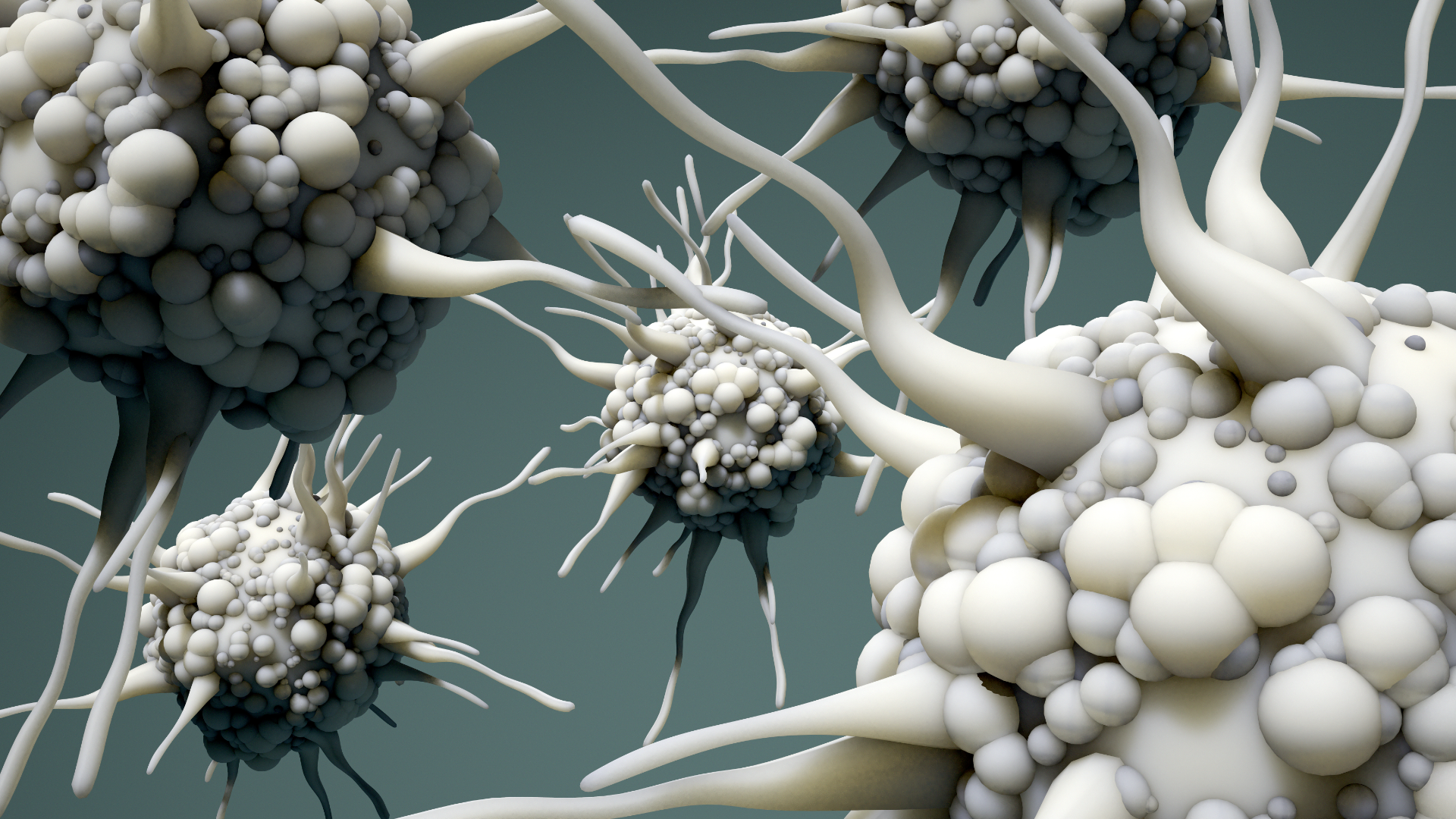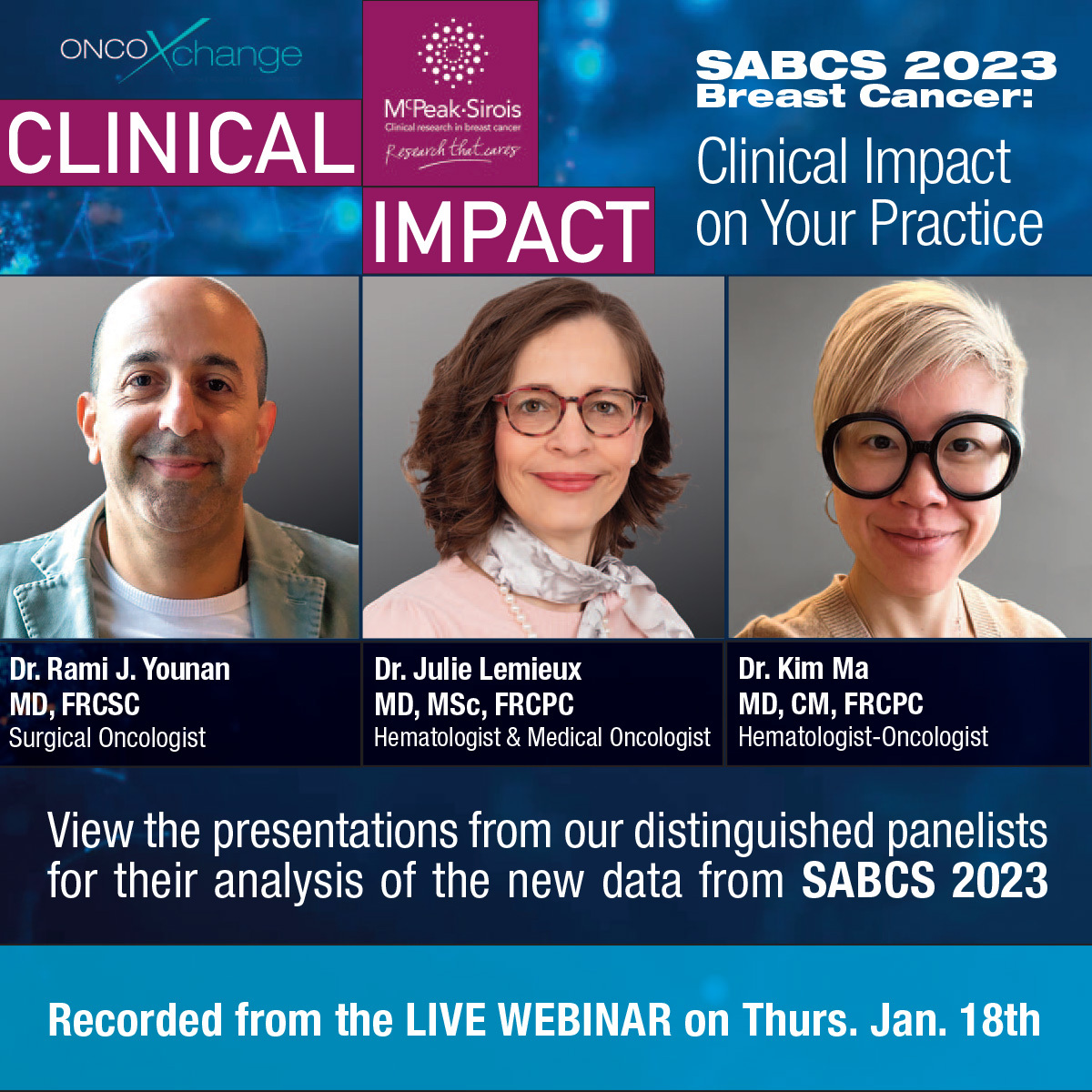
ESMO 2021 - Immunotherapy but not PARP inhibitor improves outcomes when added to chemotherapy in early TNBC
September 2021
By Wayne Kuznar
Long-term results from two major studies conducted in patients with early triple-negative breast cancer (TNBC) demonstrate that immune checkpoint inhibition but not PARP inhibition added to chemotherapy improves clinical outcomes.
Data from the two studies were announced at the virtual ESMO 2021 Congress.
The fourth and latest interim analysis of the pivotal phase 3 KEYNOTE-522, after a median follow-up of 39 months, found that neoadjuvant/adjuvant pembrolizumab plus chemotherapy resulted in a relative reduction in event-free survival events of 37% compared with chemotherapy alone (15.7% vs. 23.8%; HR = 0.63; 95% CI = 0.48–0.82; P = .00031). The 3-year event-free survival rate was 84.5% with pembrolizumab/chemotherapy compared with 76.8% with chemotherapy alone, said Peter Schmid, MD, PhD, from the Centre for Experimental Cancer Medicine, Barts Cancer Institute, London.
The 3-year event-free survival rates were 84.5% in the pembrolizumab/chemotherapy arm compared with 76.8% in the chemotherapy alone arm.
Neoadjuvant pembrolizumab plus chemotherapy induced a significant increase in pathologic complete response (pCR) rate compared with chemotherapy alone: 64.8% vs 51.2%, an absolute 13.6% improvement (P = .00055).
In KEYNOTE-522, pCR was predictive of a better outcome, with or without pembrolizumab, he said. The EFS in patients with pCR after pembrolizumab was better than in patients without pembrolizumab (HR = 0.73; 95% CI: 0.39-1.36).
The improvement in EFS and pCR were deemed “clinically meaningful,” by Prof. Schmid. “At this early timepoint, there was a favorable trend for overall survival in the pembrolizumab group. Of course, the final results are still pending.”
In patients with residual disease, EFS was better with receipt of pembrolizumab than without, with an absolute difference of approximately 10% (HR = 0.70; 95% CI, 0.52-0.95).
He postulated that the absence of pCR benefit in future trials may not rule out an EFS benefit. “I think that’s important when we look at the design of future neoadjuvant trials,” he said.
On subgroup analysis, the benefit of pembrolizumab on EFS was similar for patients with N-negative/N-positive disease, despite a larger relative benefit in pCR for patients with node-positive disease. The benefit was also similar for patients with PD-L1-positive or PD-L1-negative tumors.
About 50% of first events were distant events. “At the time of analysis, 22 patients with non-distant events had subsequent additional distant events,” he said. Distant events occurred in 20.3% of the chemotherapy arm and 12.8% of the pembrolizumab arm, an absolute difference of 7.5%, “which was very similar to the delta for EFS.”
In July 2021, the U.S. Food and Drug Administration approved pembrolizumab for the treatment of patients with high-risk early-stage TNBC in combination with chemotherapy as neoadjuvant treatment and then continued as a single agent as adjuvant treatment after surgery.
In contrast, long-term outcomes from the BrighTNess trial showed no benefit from the addition of a PARP inhibitor to neoadjuvant chemotherapy in TNBC.
Long-term outcomes of the phase 3 study confirm that only the addition of carboplatin to paclitaxel impacts on pCR and EFS, said Sibylle Loibl, MD, PhD, chief executive officer, the German Breast Group, Neu-Isenburg, Center for Hematology and Oncology Bethanien, Frankfurt, Germany
At a median follow-up of 4.5 years, the combination of carboplatin plus paclitaxel plus the PARP inhibitor veliparib was associated with a significantly higher hazard ratio (HR) for EFS than paclitaxel alone (0.63; P=0.016), but the triplet was not superior to carboplatin–paclitaxel (HR 1.12; P=0.620).
In a post-hoc analysis, the HR for EFS with carboplatin–paclitaxel versus paclitaxel was 0.57 (p=0.018). The 4-year EFS rates were 78.2% for the triplet, 79.3% for paclitaxel plus carboplatin, and 68.5% for paclitaxel.
BrighTNess is a 3-arm, multicenter, double-blinded, placebo-controlled clinical trial in which 634 patients with previously untreated stage II/III TNBC were randomized to either A) paclitaxel, 80 mg/m2 weekly (12 doses); plus, carboplatin, area under the curve 6 mg/mL (every 3 weeks, 4 cycles); plus veliparib, 50 mg orally twice daily; or B) paclitaxel plus carboplatin plus placebo, or C) placebo plus carboplatin plus veliparib. All patients (pts) then received 4 cycles of doxorubicin plus cyclophosphamide every 2 to 3 weeks. The trial was conducted across 145 centers in 15 countries in North America, Europe, and Asia.
Mortality rates were low across all treatment arms. Mortality was lowest in the carboplatin plus paclitaxel arm (16/160, 10.0%), followed by carboplatin–paclitaxel–veliparib (38/316, 12.0%) and paclitaxel (22/158, 13.9%). The differences between arms were not significant, with an HR of 0.82 for the triplet versus paclitaxel alone (P=0.45), 1.25 for paclitaxel plus carboplatin plus veliparib versus paclitaxel/carboplatin (P=0.46), and 0.63 in a post hoc analysis of paclitaxel/carboplatin versus paclitaxel alone (P=0.17).
“The rates of treatment-emergent myelodysplastic syndrome, acute myeloid leukemia, and secondary malignancies were similar between treatment groups,” said Prof. Loibl.
As in KEYNOTE-522, patients with pCR had improved EFS compared with those without pCR (HR = 0.26; P<0.0001), which was similar in patients with or without BRCA mutations.
“These findings support the inclusion of carboplatin in neoadjuvant chemotherapy for stage II-III TNBC, irrespective of BRCA status,” she concluded.

Comments (0)